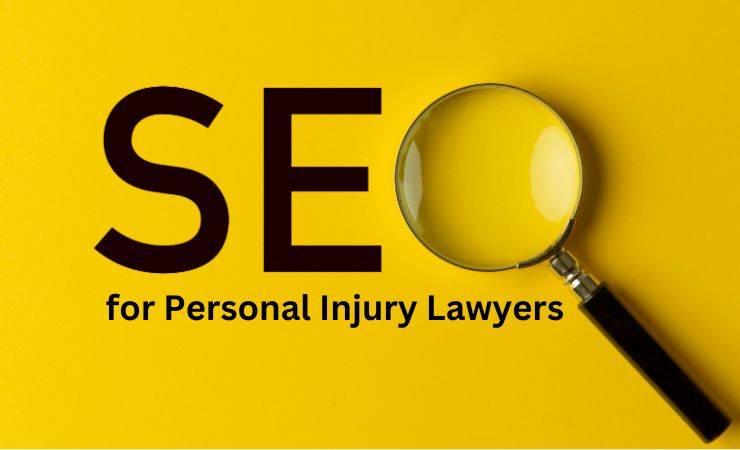Not a personal injury lawyer, firm, or an SEO working with one?
This guide is not for you. Check this out instead:
How to Learn SEO Step-By-Step: A Complete Guide for Beginners
If you’re still here, you are likely a personal injury lawyer looking to sign more injury victims or an SEO working with personal injury law firms. Either way, you’re in the right place.
Here, you’ll learn the SEO steps and strategies I used (and still using) to rank 100+ personal injury lawyers and their websites. And trust me, I held nothing back.
But before we dive into the promised steps/strategies, let’s do two things:
- Differentiate law firm SEO from standard SEO. Are they even different?
- Discuss the importance of SEO for personal injury firms.
Personal Injury Law Firm SEO vs. Standard Organic Marketing
From experience, personal injury law firm SEO is a branch of law firm SEO. Both aren’t entirely different from standard organic or digital marketing. If anything, they are a subset of the latter — like an industry approach or streamlined form of SEO.
According to Search Engine Journal, “law firm SEO (also referred to as “attorney SEO” or “legal SEO”) is the practice of increasing your law firm’s visibility in search engines. In other words, the basics are the same.
However, there are a few peculiarities about law firm SEO. Here are the top 3:
- Competition: law firms face stiff competition in SEO, vying against multiple law entities nationally and locally. That high-level competitiveness is rare in conventional SEO.
- Lead generation: the primary objective is to rank your website at the top of relevant search queries to draw potential clients. Page 2 can’t help.
- Ongoing effort: SEO for law firms is not a one-time effort. Maintaining high ranks demands continuous updates and fresh content.
Do Personal Injury Law Firms Need Search Engine Optimization?
Short answer: yes!
This excerpt from Digital Authority says it all:
More than 80% of all prospective clients research attorneys online before engaging. For law firms and lawyers that deal with the public, like a personal injury lawyer, that number jumps to 92%.
In essence, the better your visibility, the higher your chances of signing new clients, more revenue, and doing what you love best: winning personal injury cases.
That said, let’s discuss how to rank your personal injury websites.
8 Steps to Do SEO for Personal Injury Lawyers
Step 1: Fix Basic Technical SEO Issues
As much as you’d like to start cranking content at scale, that’s not the sustainable way to do SEO, especially for a competitive niche like personal injury SEO. Take a step back.
Look at your website; is it mobile-friendly? Does it load fast?
Mobile-friendliness and web speed, as minor as they might seem, matter. In fact, they are ranking factors.
Bottom line: even with the best content in your niche, your technical SEO game must be top-notch to rank. So, check first.
Here’s a quick checklist of the technical SEO to look out for:
- Website speed: use tools such as Google PageSpeed Insights and GTmetrix to identify and rectify any lagging elements on your website, ensuring a faster load time. I recommend the former as it is a Google tool. Plus, you get to see live insights.
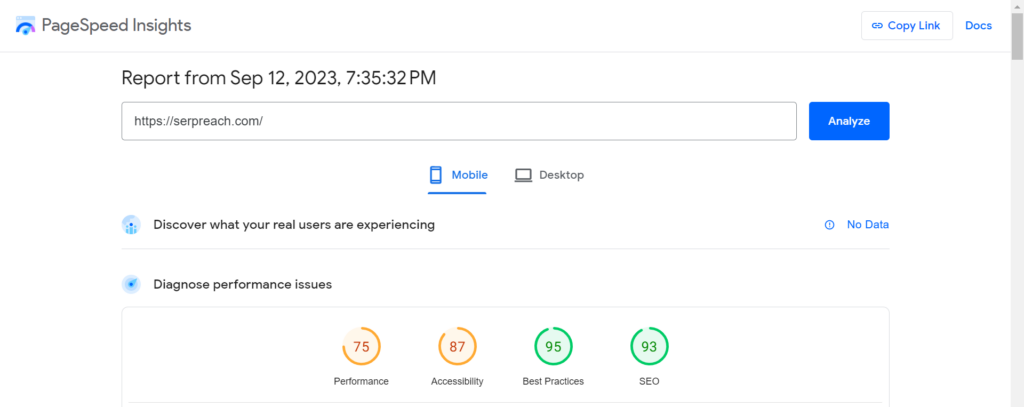
Further reading: How Important Is Page Speed for SEO?
- Mobile optimization: use the Google Mobile-Friendly Test to check the mobile-friendliness of your website. Then, adopt responsive design principles to ensure your website adjusts seamlessly to different device sizes, offering a consistent experience for both desktop and mobile users.
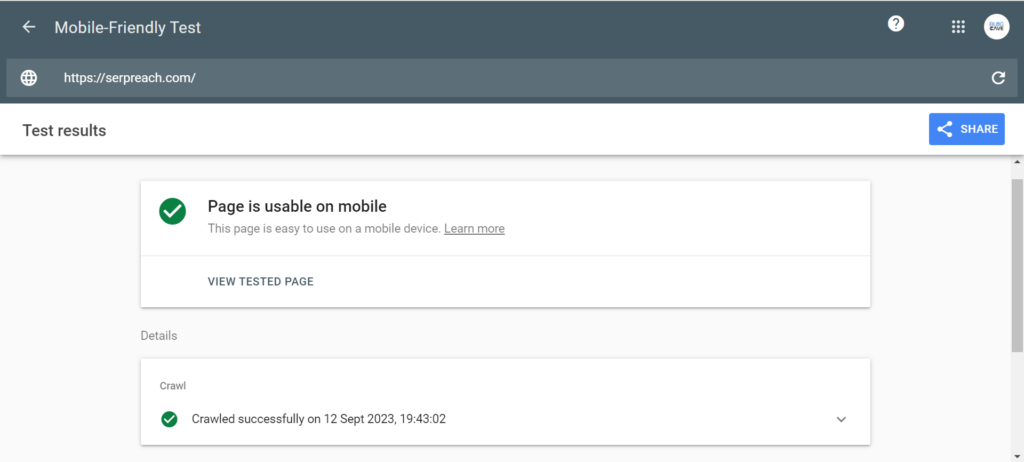
- Search engine indexing: submit an updated XML sitemap via Google Search Console to help search engines identify and index your firm’s latest pages.
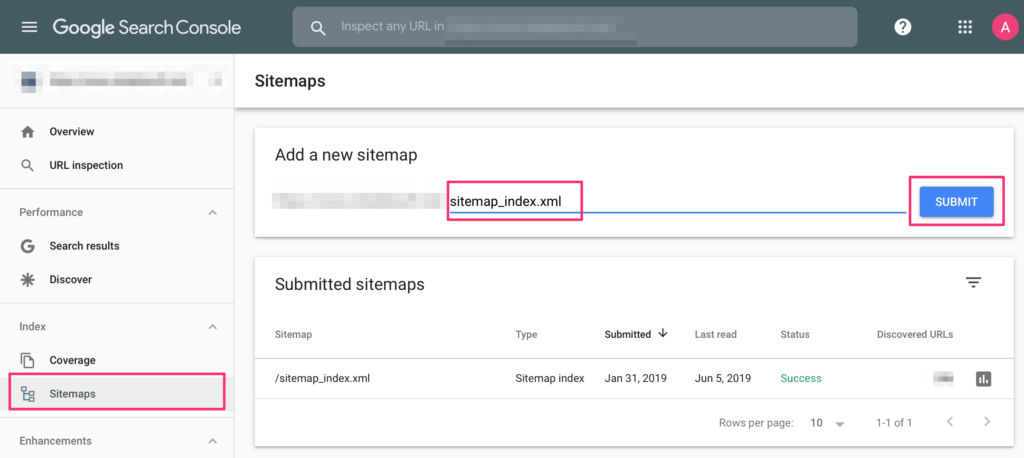
- Crawl error resolution: regularly check for and fix any “404 errors” or server errors that can hamper the user experience and impede search engine crawlers.
- Eliminate duplicate content: use tools like Siteliner to detect repetitive content across your website and make necessary revisions to ensure uniqueness.
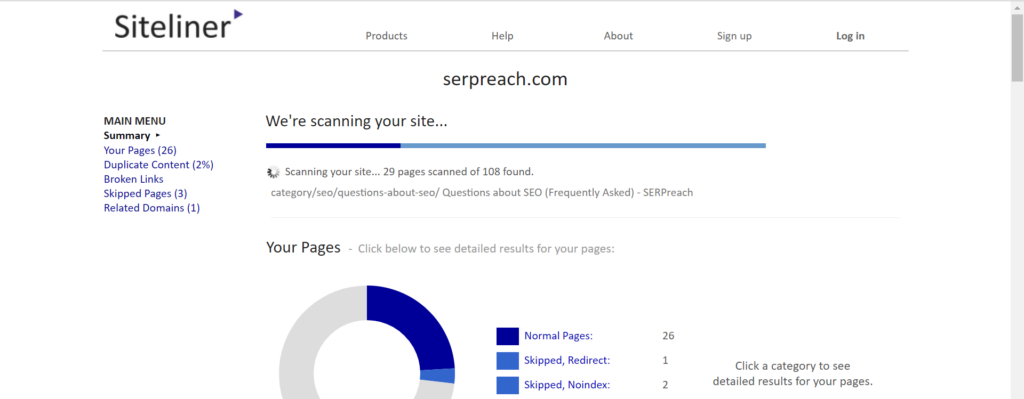
- Internal linking structure: ensure that your website’s pages are interlinked logically. This will promote navigation for users and help search engines understand the hierarchy and relationship between pages.
Step 2: Enhance User Experience
You’re working with accident victims. They need information quickly, more than conventional prospects. So, ensure your website is designed to meet such demands.
Bottom line: adopt a clean, clutter-free design that guides visitors seamlessly through the site’s key sections.
Here are the usual user experience factors I enhance:
- Navigation: incorporate a well-structured menu with logically grouped items. This will assist users to swiftly locate the information they’re seeking.
- Clear Calls-to-Action (CTAs): use contrasting colors and concise texts for buttons [like “contact us,” free consultation,” or “read client stories”] leading to a desired action.
- Accessible contact details: place your firm’s phone number prominently at the top of each page, ensuring quick access for visitors wanting to reach out. Also, create an accessibility and update about us page with details of every attorney in the firm.
- Simplified contact form: reduce form fields to essentials like name, email, and a brief message. Making your onboarding process straightforward for potential clients to inquire without feeling overwhelmed.
- Client testimonials: feature a dedicated section or sidebar displaying genuine client feedback, building trust and credibility among prospective clients. If possible, add a quick summary of the accident.
Step 3: Optimize Your Website for Local SEO
Optimizing for local searches is golden for a competitive niche like personal injury lawyer SEO. It is like a harmless shortcut. How so?
Local search results pop up before organic results. In other words, you’d spend less on outranking big law firms on organic search engine rankings. All you need is to get seen on Google Maps.
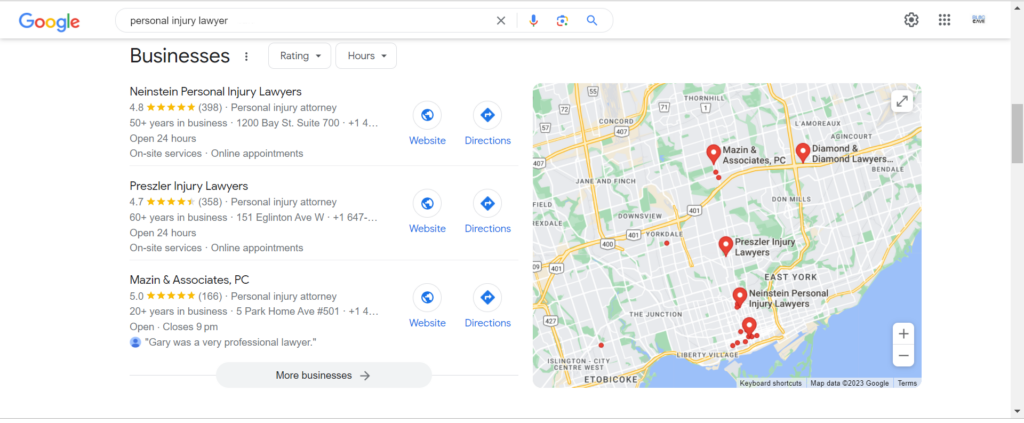
Besides, most of your prospects will likely live in your vicinity. In other words, your business (or client’s) will pop up as the nearest personal injury lawyer. And boom, you’ll have a prospective client who will pay your retainer fee.
So, how can you enjoy the benefits of local SEO?
Create a Google Business Profile for your business. And now for the optimization strategy:
- Ensure you use an accurate name, Google Maps address, and phone number)
- List your business in appropriate categories and
- Add glowing client reviews
Step 4: Perform Keyword Research
Like conventional SEO, keyword research is one of the bedrocks of SEO success. How else will you know what injury victims want? What should you write about? How will you know the basis for link building?
You see, keyword research is crucial. And it can be difficult and expensive too. Below is how I do it with less stress and almost for free.
- Using Semrush:
- Register an account with Semrush; you’ll be given 10 free requests daily. Use that to understand keyword research.
- Go to Keyword Magic Tool > input your keyword or phrase for ideas.
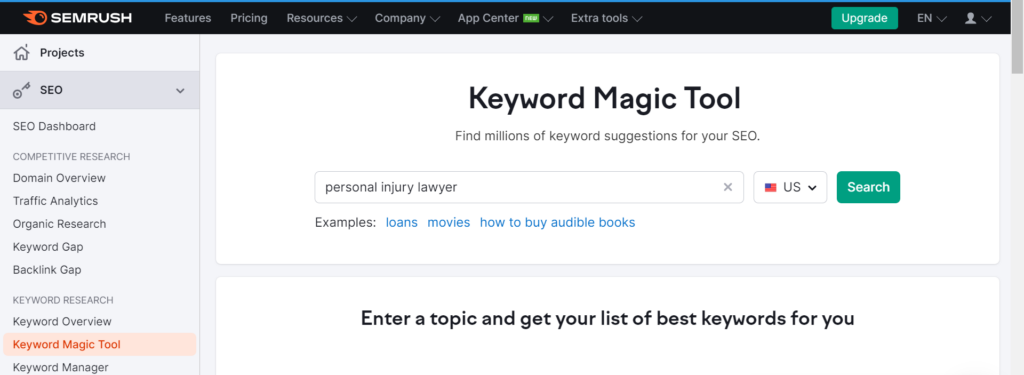
- Filter the results. First, change from “broad match” to “related.”
- Next, change the KD (keyword difficulty)% to “easy” or “very easy.”
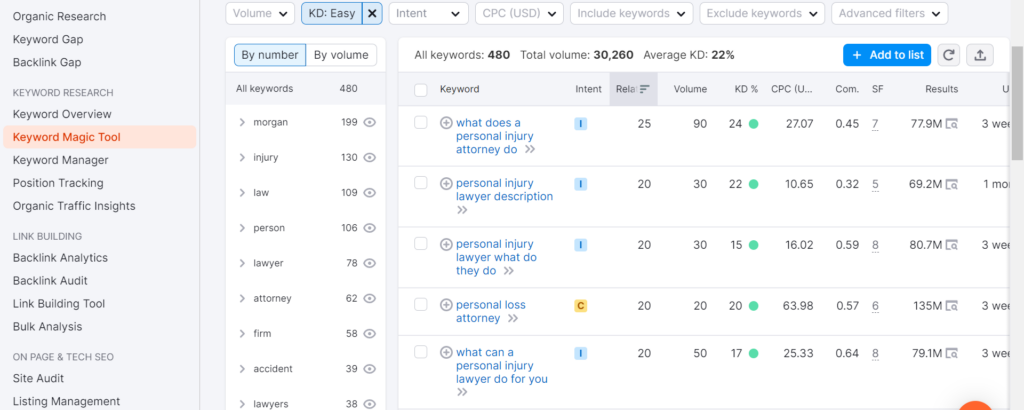
- Now, pick any of the suggested keywords. Type it into the Google search bar.
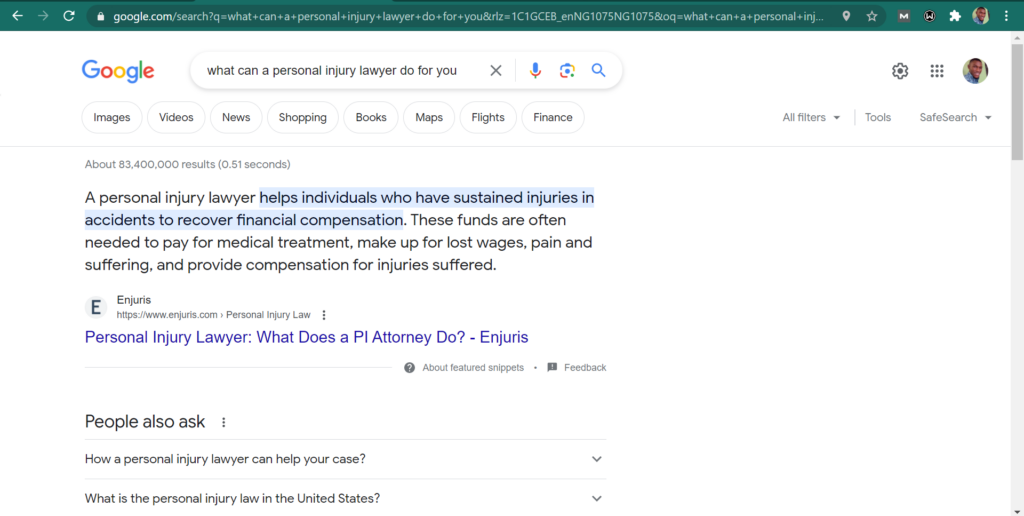
- Incorporate the “people also ask” questions into your keyword. But personalize it to your location. E.g., What can a personal injury do for you in Toronto? What is the personal injury law in Toronto?
Why the long queries/questions?
Long queries (better known as long-tail keywords) are easier to rank. More importantly, they are much easier to write as they are natural or likely questions clients/prospects would ask.
- Using Ahrefs:
- Visit Ahrefs Free Keyword Generator > type in your query
- Toggle to the questions part to find keywords with lower KD like this:
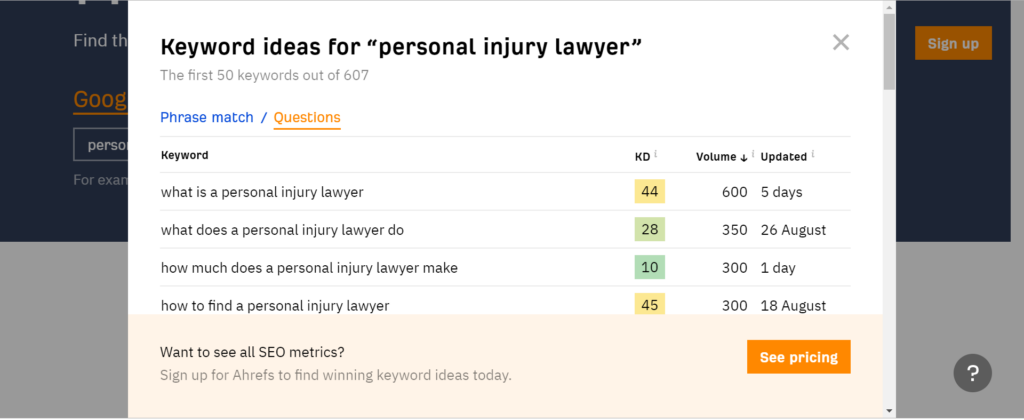
Unlike in Semrush, Ahrefs’ freemium is limited to a few results. Plus, you can’t apply filters for deeper searches.
Either way (be it with Ahrefs or Semrush), be creative and thought-provoking with your keyword research. More importantly, offer value. That is the sustainable way to win in personal injury SEO.
Now, you can create content.
Step 5: Create Value-Rich Content
Accidents are damaging events for the victims, friends & relatives, and even onlookers. When such happens, people seek information to limit the damages or at least get compensation for their troubles.
No one wants another content or page that dilly dally with information. Injury victims seek value. Make it the cornerstone of your content.
So, how do you create valuable content? Does it mean you won’t keyword-optimize your articles?
No!
Ask yourself a few questions to get closure:
- Does your content fulfill the promise in its title or introduction?
- Can you explain your ideas in a brief and short form?
- Is the long, bland wall of texts necessary?
Your answers will guide you.
Bottom line: valuable content is actually helping people, not baiting them. For example, I promised to discuss how to do SEO for personal injury websites. If this article fails to deliver on the promise, it is invaluable.
Note: creating valuable content doesn’t mean you must neglect your SEO efforts. For example, if you don’t offer coverage for scooter & boat accidents or wills & trusts, don’t create content around them. Focus on the services you offer.
Here is what I do to create a combo of targeted but valuable, relevant content for my personal injury lawyer clients:
- Ask for clients’ frequently asked questions
- I analyze the questions with keyword research tools
- I pick the promising queries and then throw them into law-related groups and forums
- I then choose the queries with the most engagement
- I seek expert opinions and practical examples. Then, I write and optimize with Surfer’s Content Editor.

- Lastly, I repurpose the content and post it on social media networks. This helps my clients to enhance their social media presence.
Step 6: Optimize On-Page Elements
Beyond your content, other supporting casts need optimization. These elements, together, help your content rank high on search results and generate leads.
Here are some of the said supporting casts — and an example of how to optimize them:
- Title tags: these crucial elements provide a quick snapshot of a page’s content.
Example: “Top Personal Injury Attorneys in [City Name]”
- Meta descriptions: provide summaries of a page in search results.
Example: “Seeking justice in [City Name]? Trust our expert team.”
- Headers (H1, H2, H3): they structure your content and highlight key points.
Example: H1: “Personal Injury Law in [City Name]”
- URL structure: a clean and keyword-rich URL can aid in better rankings.
Example: “www.[lawfirmname].com/personal-injury-[City Name]”
- Image alt text: this helps search engines understand the content of images.
Example: “Personal-injury-lawyers-at-work”
Step 7: Build Strategic Backlinks to Your Website
Frankly, all links are not the same. And definitely, all links can’t improve your personal injury SEO. In fact, only a few work for law firm SEO.
In essence, building tons of links won’t help. From experience, only strategic tactics such as editorial links, PR backlinks, and high-DA guest posts work.
Nonetheless, the methods below can also earn high-value backlinks – but only when done right:
- Getting listed on high-authority legal directories
- Sponsoring local events to get features on publications (local and national)
- Partner with influencers in your niche
- Guest write for reputable law-related blogs and magazines
- Attend legal-related workshops and events
Step 8: Monitor and Tweak Your SEO Strategies
There is no one best SEO strategy for personal injury law. You must track, audit, and tweak your tactics until you get results.
While tracking is essential. You should also know what to track. The checklist below can help:
- Traffic analysis: regularly review Google Analytics to understand which sources (organic, referral, direct, etc.) drive the most visitors to your website.
- Engagement metrics: delve into metrics like bounce rate, average session duration, and pages per session to gauge how effectively your content resonates with visitors.
- Keyword performance: use tools such as Google Search Console to monitor which keywords bring in the most traffic and which need further optimization.
- Conversion tracking: set goals in Google Analytics to track desired user actions, such as filling out a contact form or calling your firm. This will help you determine which parts of your site have better CRO (Conversion Rate Optimization).
- Competitive analysis: use SEO tools like Semrush or Ahrefs to periodically assess where competitors rank for your target keywords and adjust your approach.
- Feedback loops: encourage feedback from clients about their website experience. They might offer valuable insights that analytics might miss.
Still Can’t Figure Out How To Win In Personal Injury Law SEO?
The chances are that you still couldn’t rank your personal injury lawyer website after implementing the tips in this article. Perhaps your competitors are more aggressive with their SEO.
If this is your case, you need to get help. SERPreach can help.
Mind if I take a look at your SEO strategies and marketing efforts? No?
